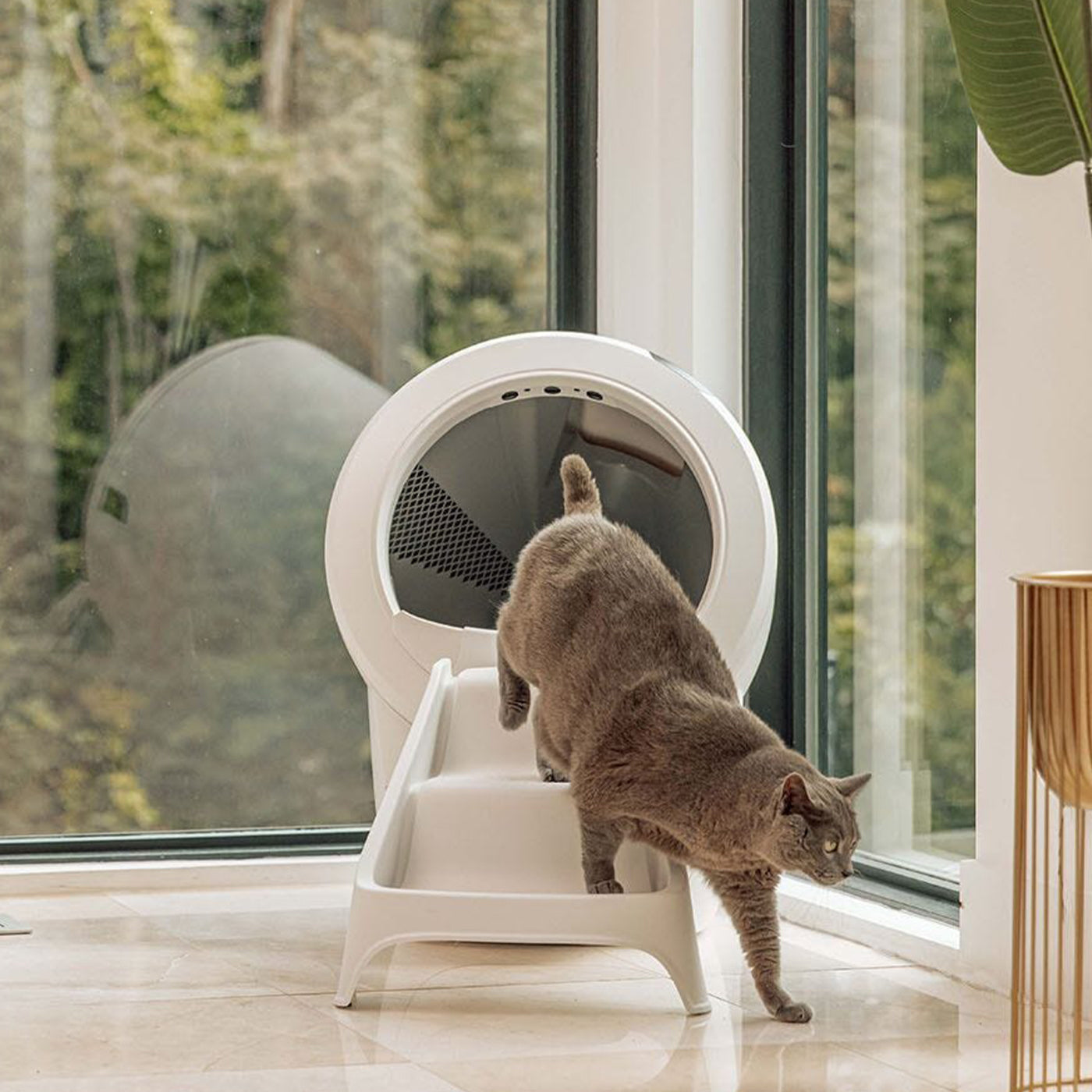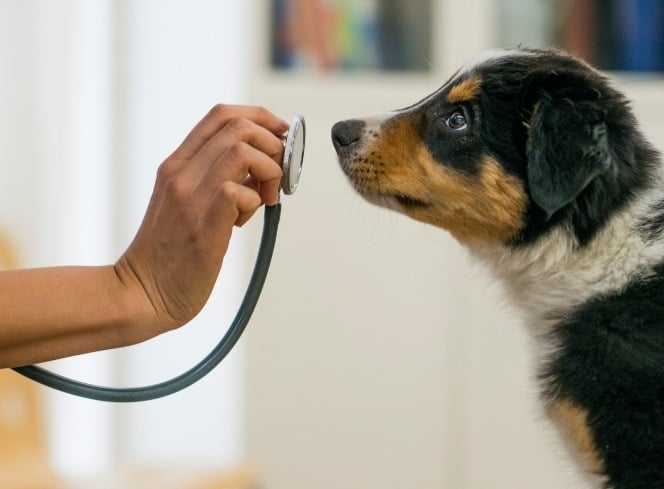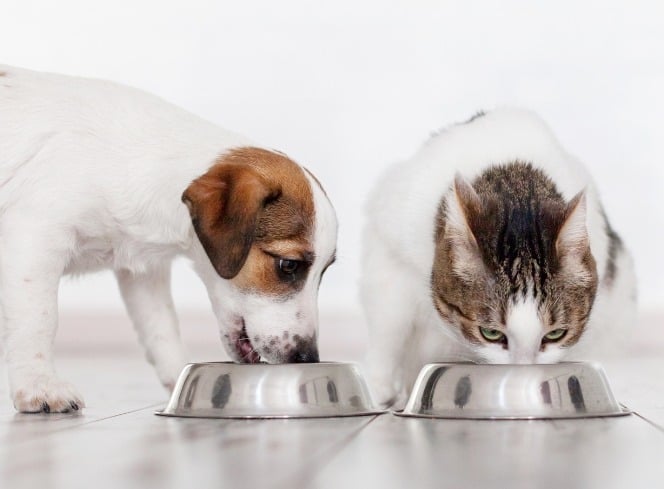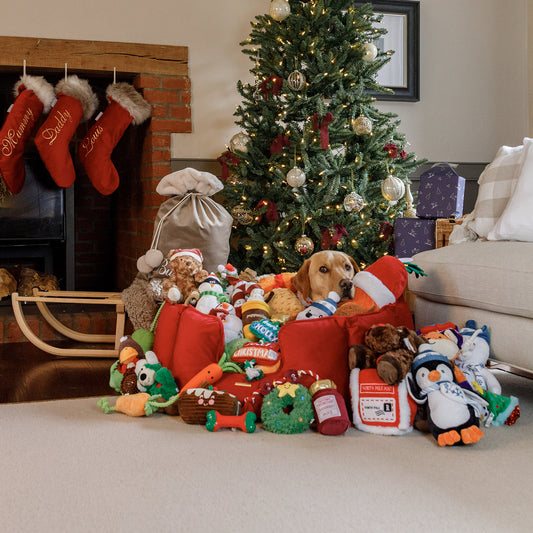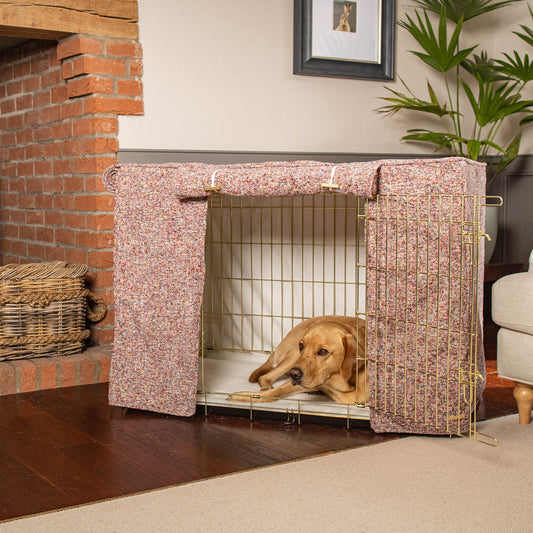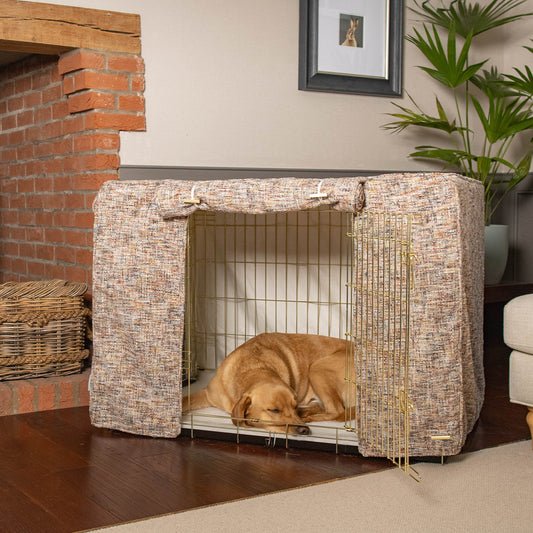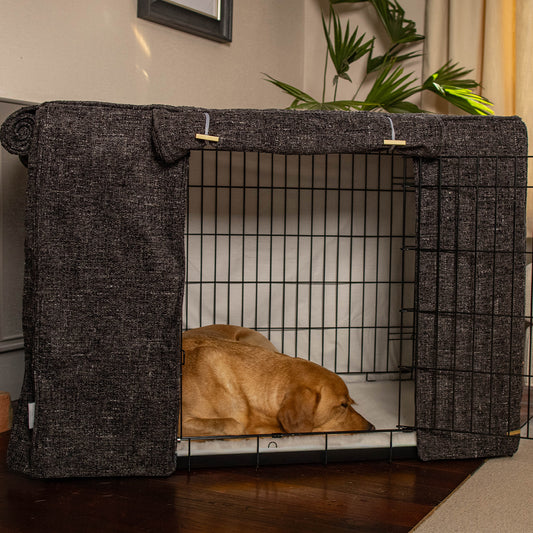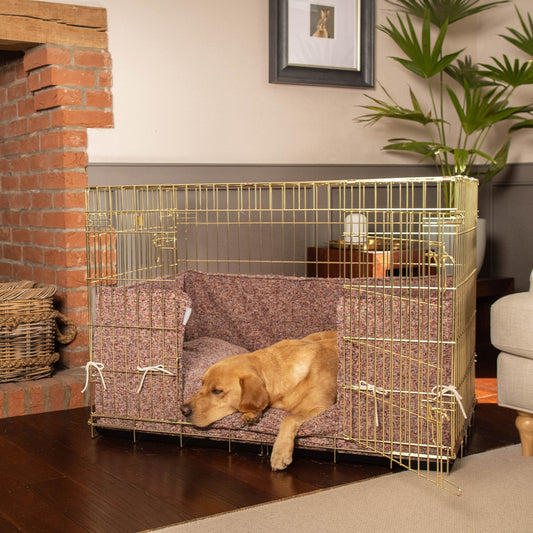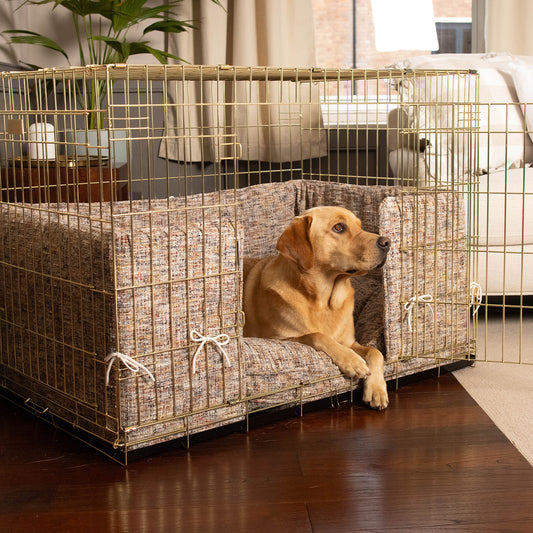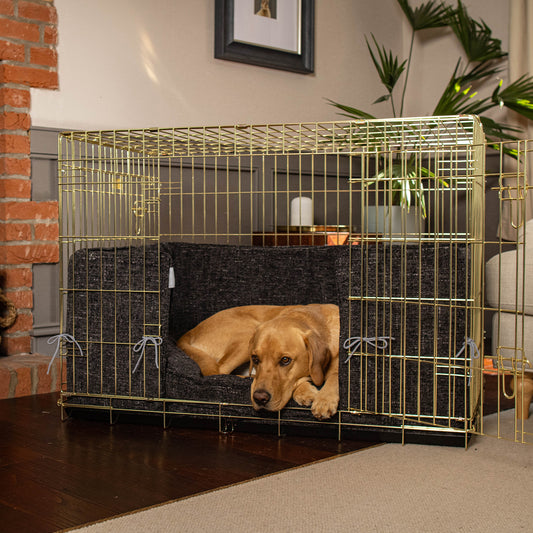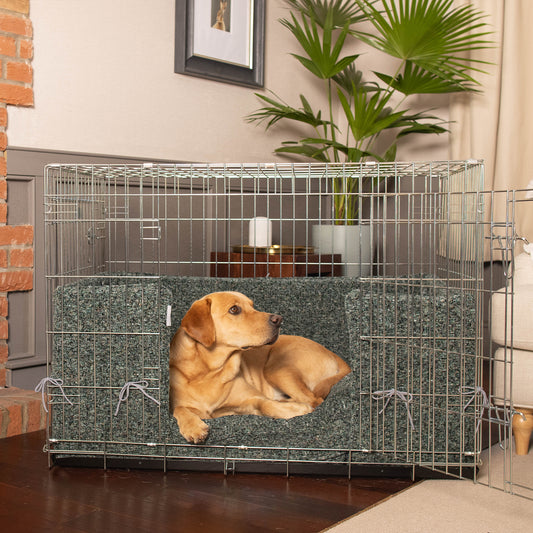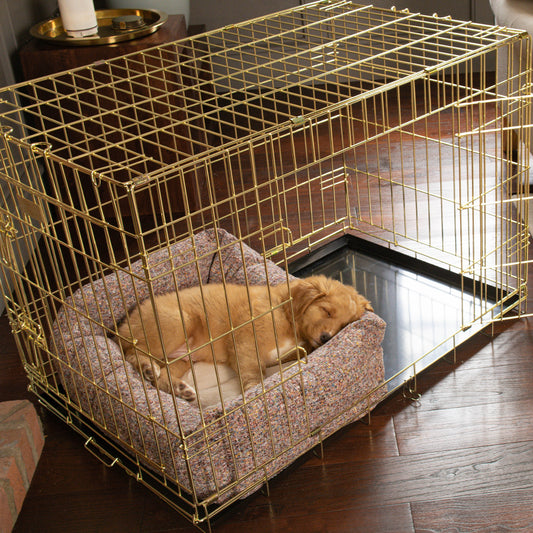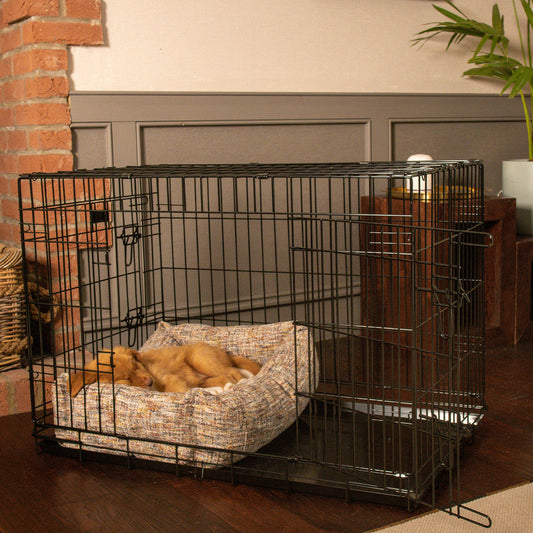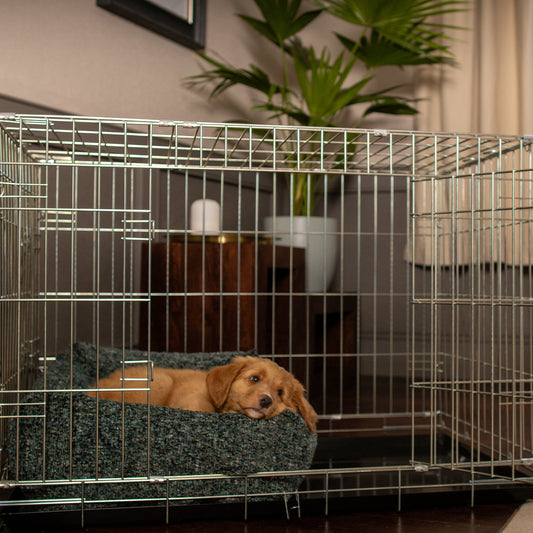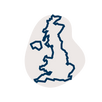When it’s cold outside it’s easy for us to flick the heating on, find another layer and cuddle up under the blanket on the sofa, but how do you keep your dog warm in colder months?
Some dogs love to roll in the snow whereas others shiver after being outside for a minute, every dog is different when it comes to the cold.They can’t tell us if they’re too cold so here’s the things to look out for and our top ways of keeping them snuggly this winter
How To Keep A Dog Warm In Winter

Whether winter means snow and ice or slightly milder temperatures, there’s a few steps you can take to keep your dog warm in winter. Even though dogs have furry coats, which do act as a layer of warmth and protection, they can still suffer in the cold.
Do Dogs Get Cold?
Despite descending from wolves, dogs do feel the cold just like us - they aren’t capable of staying in the cold for long periods of time like their wolf ancestors.
Smaller dogs and short haired dogs are much more likely to feel the cold than larger or long haired dogs. Similarly puppies and senior dogs are likely to feel the cold much more than adult dogs as they regulate their body temperatures quite as well.
How Do Dogs Keep Warm

The number one way dogs keep themselves warm is with their fur, as we mentioned this is more the case with longer haired dogs but all dog coats provide a level of insulation.
In cold weather, your dog’s hair will stand up to help trap the heat and act like a blanket to help insulate them.
Another way your dog keeps themselves warm in the winter is through the paws. When we as humans are cold, our body shuts off the blood supply to our hands and feet to protect our vital organs. With dogs, however, the warm blood supply to dogs paws keeps going in the cold. This helps to keep their paws warm and in turn them warm.
How Cold Is Too Cold For A Dog
The answer to this question hugely depends on your dog's breed, if they have a long shaggy coat this will act as an extra layer of insulation to help the cold better than their short-haired counterparts. Long-haired dog breeds that fit this category include:
- Siberian Husky
- Chow Chow
- Bernese Mountain Dog
- Collie
- New Foundland
- Saint Bernard
- Alaskan Malamute
- Irish Wolfhound
- Golden Retriever
- Old English Sheepdog
Does your dog have a short coat of hair? They might not be able to handle the cold quite as well, examples of short-haired dogs include:
- Bulldog
- Yorkshire Terrier
- Boxer
- Great Dane
- Shih Tzu
- Boston Terrier
- Chihuahua
- Beagle
- Pug
We’ve put in our handy table to help you work out when it’s too cold to walk your dog outside

What Can I Use To Keep Dogs Warm In Winter?

- Warm Cosy Place to sleep - Try moving your dog's bed to the warmest place in the house away from any drafts windows or doors. Then you can add an extra cosy blanket, like our luxury faux fur blankets, for your dog to snuggle up in to help keep them warm this winter.
- Coat or a jumper - For shorter-haired breeds as we listed above you could try a snuggly jacket or a coat. These will help add another layer of insulation to your dogs when you’re out for your winter walks. However, not every dog loves wearing a coat, they may need a little time to get used to wearing one but if they don’t love it that’s okay! Simply keep their trips outside short and sweet.
- Protect their paws - Dogs paws, ears and nose are much more exposed to the cold than the rest of their body and can be much more sensitive. Chemicals and grit that has been put down to help prevent the ice can actually be an irritant to your dog. If you have walked your dog on an icy or frosty day make sure to check their paws for cracks or bleeding both before and after your walk, if they look irritated why not try Be:loved paw balm?
- Shorter Walks - Although your dogs will still need exercising in winter, so we recommend little and often when it comes to walks. Our recent blog ‘Things To Dog With Your Dog At Home’ has some great enrichment activities to help them burn off that excess energy, as does The Blue Cross Guide to Indoor Dog Games
Winter Safety Tips
Whilst you’re doing everything you can to keep your dog warm this winter, there are a few hazards to watch out for to help your pup safe
- Watch out for fire places - If you’re anything like us you’ll love curling up in front of a cosy fire with your dog, however, we recommend never leaving your pet unattended whilst you have the fire burning. Also, putting up a safety screen is a great idea to help keep your pets safe from the flames, soot and embers of the fire.
- Plug-In Heaters - Similarly to fireplaces you need to be really careful with plug-in heaters around your pets. If your dog or cat gets too close they can get burned or if they happen to knock it over they could start a fire
- Keep anti-freeze out of reach and sight - Anti-freeze actually tastes sweet to most dogs however it is highly toxic so make sure you keep it well out of paws-reach. If you suspect they have swallowed some anti-freeze make sure to contact your vet so they can instruct you on what to do next
- Don’t leave them alone in the car - Similarly to summer, we advise not leaving your dog on their own in your car in winter when the weather is particularly cold.
How To Keep A Dog Warm At Night

At night is when the temperatures really drop and you’ll want to make sure your dog has a snug and cosy nights sleep. We recommend adding some extra cosy bedding to your dog’s bed to help keep them warm through the winter as well as moving their bed away from any draughty areas of your house. If your dog is a chewer or you have a young puppy, be careful that they don’t chew any extra bedding that you give them!
How To Keep A Dog Warm In A Crate At Night

We designed our crate sets especially with keeping your dog warm and cosy in mind. Our crate sets consist of a crate, cushion, bumper and cover - all designed to keep your dog warm in their crate at night.
- The thick cushion is not only comfy to lay on but is thick enough to raise your dog off the ground to help keep them warm
- The bumper stops any drafts from coming in the side of your dog's crates as well as provides them with a cosy place to rest their head
- Our crate covers have doors which can be rolled down to keep your dog’s crate insulated as well as block any light out
Do Blankets Keep Dogs Warm?
Blankets not only keep your dogs warm but also provide a great deal of comfort to your dog. Adding a new cosy blanket to your dog’s bed in the winter is a great way to keep them warm on a cold night.
We hope these tips for keeping your dog warm in the colder months help to keep you snug and cosy all winter long. And remember - cuddles will help to keep both you and your pup warm this winter as well as strengthen your bond!
























































